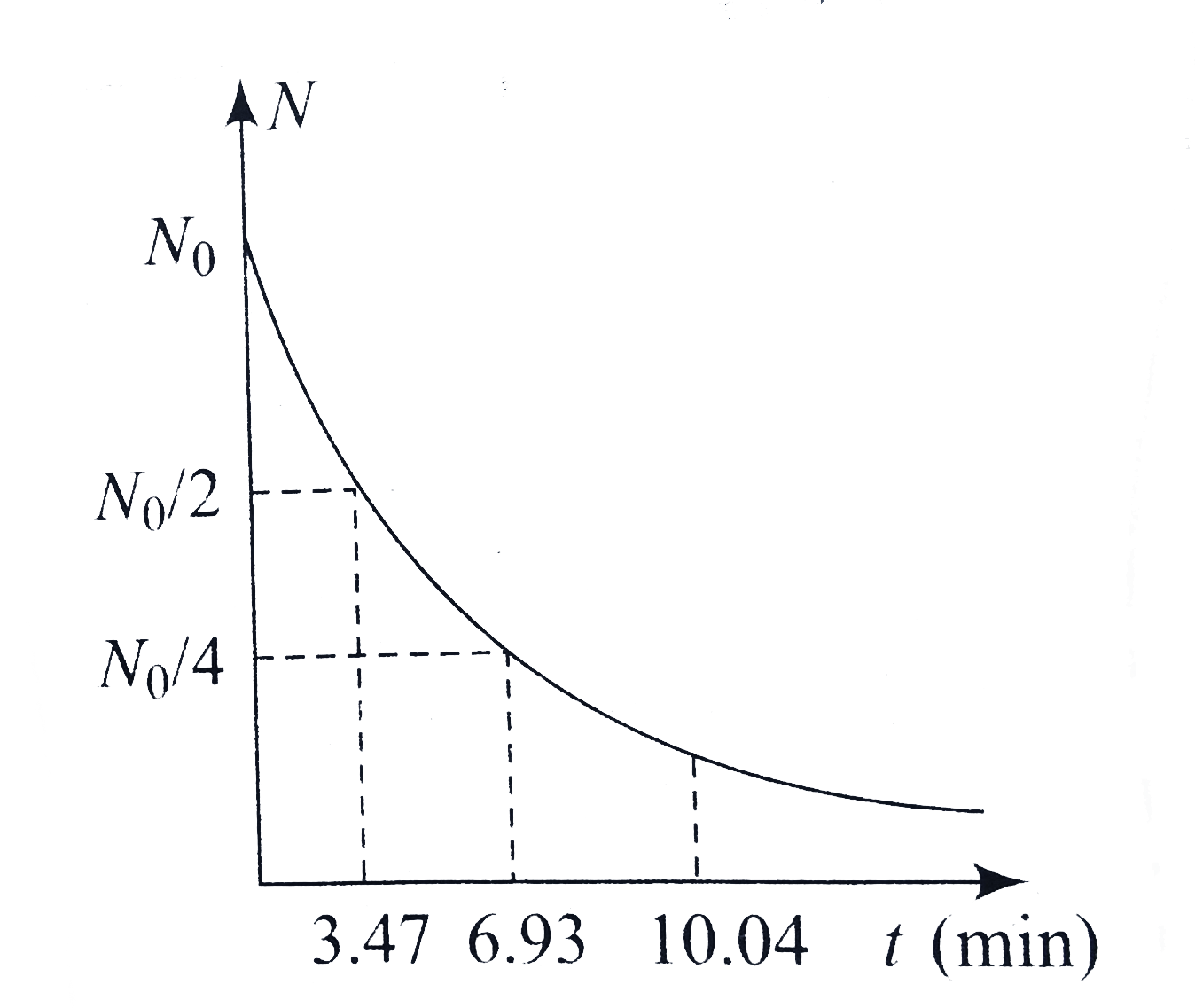Two radioacitve nuclei P and Q, in a given sample decay into a stable nucleus R. At time t=0, number of P species are 4 N0 and that of Q are N0. Half-life of P (for conversion to R) is 1 min, where as that of Q is 2 min. Initially there are no nuclei of R present in the sample. When number of nuclei of P and Q are equal, then the number of nuclei of R present in the sample would be
2N0
3N0
9N02
5N02
The correct Answer is:C
PQ4N0N01min2min
T1/2
NP=NQ
4N02t/1=N02t/2
4=2t/2
22=2t/2
t2=2⇒t=4min
Disactive nucleus or Nuclei of R
=(4N0−4N024)+(N0−N022)
=4N0−N04+N0−N04=5N0−N02
=92N0
Similar Questions
Nuceli A and B convert into a stable nucleus C. Nucleus A is converted into C by emitting 2αparticels and 3β-particles. Nucleus B is converted into C by emitting one α-particle and 5β-particles. At time t=0, nuclei of A are 4N0 and nuceli of B are N0. Initially, number of nuclei of C are zero. Half-life of A (into conservation of C) is 1min and that of B is 2min. Find the time (in minutes) at which rate of disintegration of A and B are equal.
View SolutionHalf-life of a radioactive substanceA and B are, respectively, 20min and 40min. Initially, the samples of A and B have equal number of nuclei. After 80min, the ratio of the ramaining number of A and B nuclei is
View SolutionRadioactive nuclei P and Q disintegrate into R with half lives 1 month and 2 months respectively. At time t=0 , number of nuclei of each P and Q is x.
Time at which rate of disintegration of P and Q are equal , number of nuclei of R is
View SolutionA radioactive sample undergoes decay as per the following gragp. At timet=0, the number of undecayed nuclei is N0. Calculate the number of nuclei left after 1h.
 .
.
View SolutionA radioactive sample undergoes decay as per the following gragp. At timet=0, the number of undecayed nuclei is N0. Calculate the number of nuclei left after 1h.
 .
.
View SolutionNuceli A and B convert into a stable nucleus C. Nucleus A is converted into C by emitting 2αparticels and 3β-particles. Nucleus B is converted into C by emitting one α-particle and 5β-particles. At time t=0, nuclei of A are 4N0 and nuceli of B are N0. Initially, number of nuclei of C are zero. Half-life of A (into conservation of C) is 1min and that of B is 2min. Find the time (in minutes) at which rate of disintegration of A and B are equal.
View SolutionThere are n number of radioactive nuclei in a sample that undergoes beta decay. If from the sample, n' number of β-particels are emitted every 2s, then half-life of nuclei is .
View SolutionThere are n number of radioactive nuclei in a sample that undergoes beta decay. If from the sample, n' number of β-particels are emitted every 2s, then half-life of nuclei is .
View SolutionNucleus A decays into B with a decay constant λ1 and B further decays into C with a decay constant λ2 . Initially, at t = 0, the number of nuclei of A and B were 3N0 and N0 respectively. If at t = t0 number of nuclei of B becomes constant and equal to 2N0, then
View SolutionA stable nuclei C is formed from two radioactive nuclei A and B with decay constant of λ1 and λ2 respectively. Initially, the number of nuclei of A is N0 and that of B is zero. Nuclei B are produced at a constant rate of P. Find the number of the nuclei of C after time t.
View Solution
